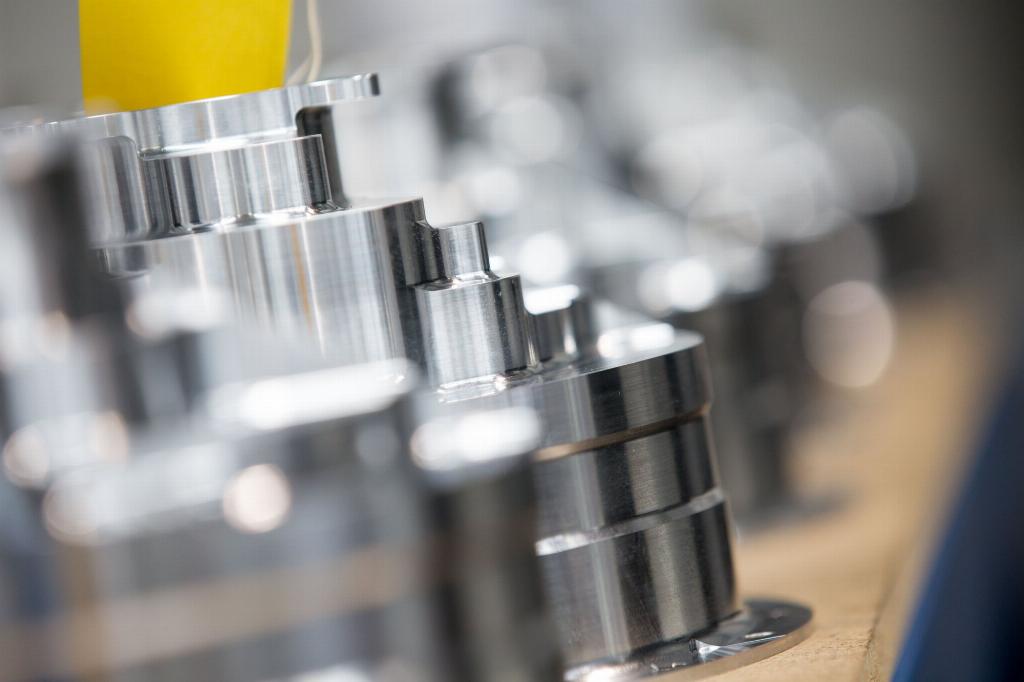Room for two

Whether it’s additive or subtractive, there’s room for two when it comes to the future of aerospace manufacturing. The Digital Manufacturing Centre and Produmax team up to meet the OEMs’ growing additive manufacturing needs.
Now is a strange time to consider the future of aerospace manufacturing when, for the past year, the focus of many businesses has been solely on survival. Commercial aviation has been hit hard, with ramifications throughout the supply chain.
Relatively unperturbed by this, technology and engineering continue to advance. With national security a growing concern for many nations – reflected in recent budgets – and widespread vaccination (and travel) a possibility for 2021, perhaps now is the perfect time to contemplate the future of the aerospace industry and the technologies that will support it.

While considered by many to be relegated to the realm of prototyping and high-cost one-off pieces, the rapid advance of additive manufacturing (AM) has, in some ways, slipped under the radar. Its proponents highlight that AM allows the manufacture of parts that could not feasibly be made otherwise and, critically for aerospace, it can make them significantly lighter. From part consolidation and design innovation to significantly faster turnaround and more efficient material use, there are a multitude of positives to AM.
There have been some incredible examples of what the technology is capable of, like GE’s Catalyst Turboprop engine, which reduced 855 components into 12, cut mass by 45kg and improved fuel burn by 20% for 10% more power. Like similar such examples, it is a compelling demonstration, but far from viable volume production.
While the instinctive response has always been that the technology is not yet mature enough, this caution and hesitation is rapidly disappearing from the industry. Perhaps the best illustration of this is BAE Systems’ announcement that 30% of its Tempest sixth-generation fighter will be made using AM. For comparison’s sake, the Typhoon was made with only one per cent additive components – quite the evolution.
There is, however, a problem. The aerospace supply chain is not equipped or prepared to supply high-quality additive parts in sufficient volume to meet aerospace requirements. There is also a distinct lack of aerospace expertise in many of the emerging AM suppliers, with engineering collaboration input a crucial aspect of the aerospace supply chain.
These supply chain shortcomings have meant that many aerospace OEMs and Tier 1 businesses have made the decision to purchase AM machines directly, using in-house R&D to find out how the technology can enhance their prototyping and production. Meanwhile, the greater aerospace supply chain continues to produce parts via more traditional processes, like casting and subtractive.
Concerns around AM have persisted despite the technology’s advances in recent years, namely the achievable tolerances, production scaling, limited size envelopes and achieving certification. These have perhaps discouraged the existing supply chain from investing in AM capabilities, given both how new the technology is and whether there is sufficient demand from aerospace customers.
Partnerships of power
While the technology has improved rapidly over the past five years, it is not yet clear how the aerospace supply chain will adapt, given the sizable capital expenditure required. Taking this supply chain shortfall into account, how can it possibly meet growing OEM additive needs? One interesting solution is for existing aerospace suppliers to team up with like-minded businesses investing in AM. This is exactly what the Digital Manufacturing Centre (DMC) and Produmax, the aerospace precision engineering specialist, have done.
While Produmax has been a leading and trusted aerospace machining and metrology supplier for over 50 years, the DMC is an industry disruptor, spun out of veteran high-performance engineering organisation KW Special Projects.

“The DMC is an engineering-led digital production facility that is set to realise the potential of AM by embracing Industry 4.0 principles and technologies,” explains Kieron Salter, CEO at the DMC. “We rely on our team of skilled engineers to not just assist customers with design for manufacture, but to really leverage the advantages of AM, designing for application and maximising part performance.”
The partnership between Produmax and the DMC is mutually beneficial on several levels. Produmax is able to align itself with the rising trend of AM while the DMC gains valuable aerospace expertise and experience as well as an on-site machining and metrology capability via a Produmax satellite site.
Whether looking at prototype or production components, the DMC can rapidly manufacture parts than can be finished via subtractive manufacturing and meet the stringent quality standards demanded by aerospace customers. This could be incredibly valuable to OEMs and Tier 1s whose only option currently is to conduct such activity independently and in-house.

“We are positioning ourselves to service the aerospace programmes of the future,” says Jeremy Ridyard, managing director at Produmax. “There are significant advantages to AM that are made all the more suited to aerospace with the addition of world-class subtractive manufacturing and metrology. This could rapidly replace the current dependence on castings, using additive to reach near shape in a fraction of the time and investment cost, getting programmes to market faster and supply spare parts on-demand.”
One of the primary challenges of this combined approach is that AM – like many other manufacturing processes – produces very subtle variations between parts. By digitally connecting both processes, they can be driven from a common ‘digital asset’, measuring and even correcting for the subtractive phase of production with adaptive machining cycles to ensure that parts meet tolerances. But if both technologies are required, why not just use subtractive from the beginning?
“Lightweighting and efficiency are the most significant drivers in contemporary aerospace engineering,” continues Ridyard. “AM allows us to make hollow parts with complex internal reinforcing that can substantially lighter with no loss in strength or durability. When you multiply this across an entire airframe, there is a clear incentive to pursue AM production. Once you take into consideration part consolidation, rapid turnaround and a wide selection of high-performance materials, it becomes even more compelling.”
Reaping twin benefits
This close collaboration between the DMC and Produmax means that parts can very easily be designed with subtractive in mind. The resulting near-net-shape and fixturing for subtractive can be designed for from the beginning, while most typical AM suppliers may deliver a part unsuitable for machining.
Another important consideration of what the DMC and Produmax are doing is the focus on high levels of engineering competence within the supply chain. Usually, by the time parts are being ordered there is no time to make meaningful design changes or improve part performance. This fails to take advantage of the supply chain’s valuable resources and proficiencies. In offering their design skills and understanding, the DMC’s engineering-led approach means that customers can fully realise – and take advantage of – the benefits of AM.
“Aerospace is an incredibly exciting sector that could benefit hugely from additive manufacturing,” concludes Salter. “While the conventional supply chain has been unable to meet the AM needs of manufacturers, we see this as an opportunity. Working alongside the brilliant team at Produmax, we are using clever engineering, connectivity and leading production technologies to address the aerospace industry’s challenges with end-to-end solutions. This is about far more than simply supplying parts; we are an enabler – a production and engineering partner that proactively help customers take advantage of state-of-the-art manufacturing processes.”












